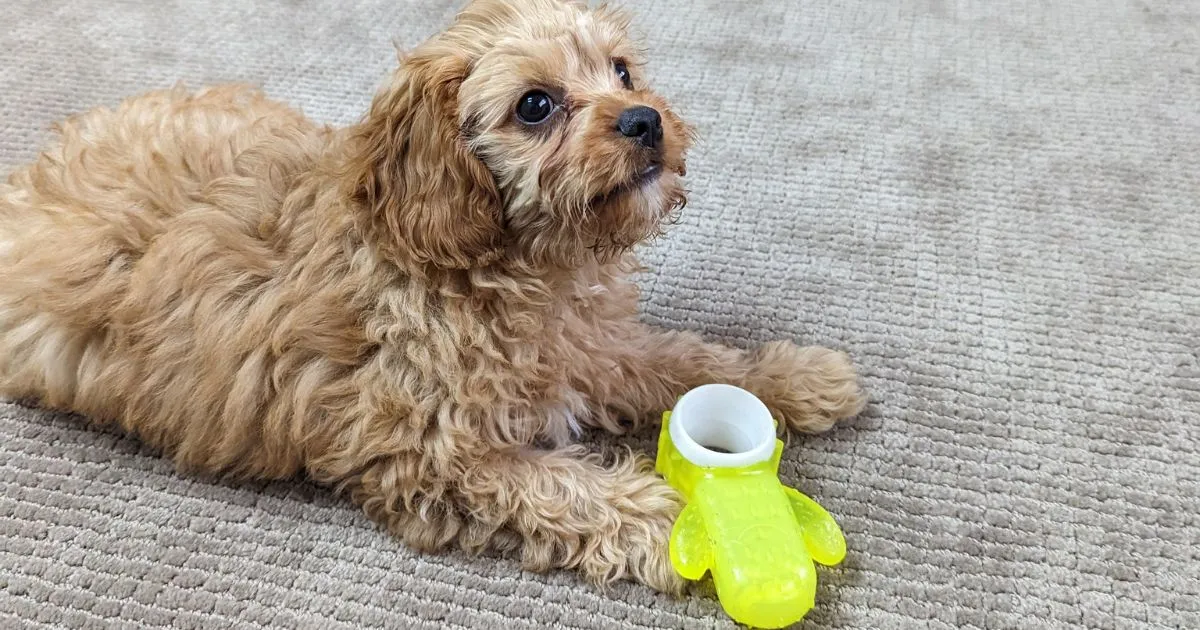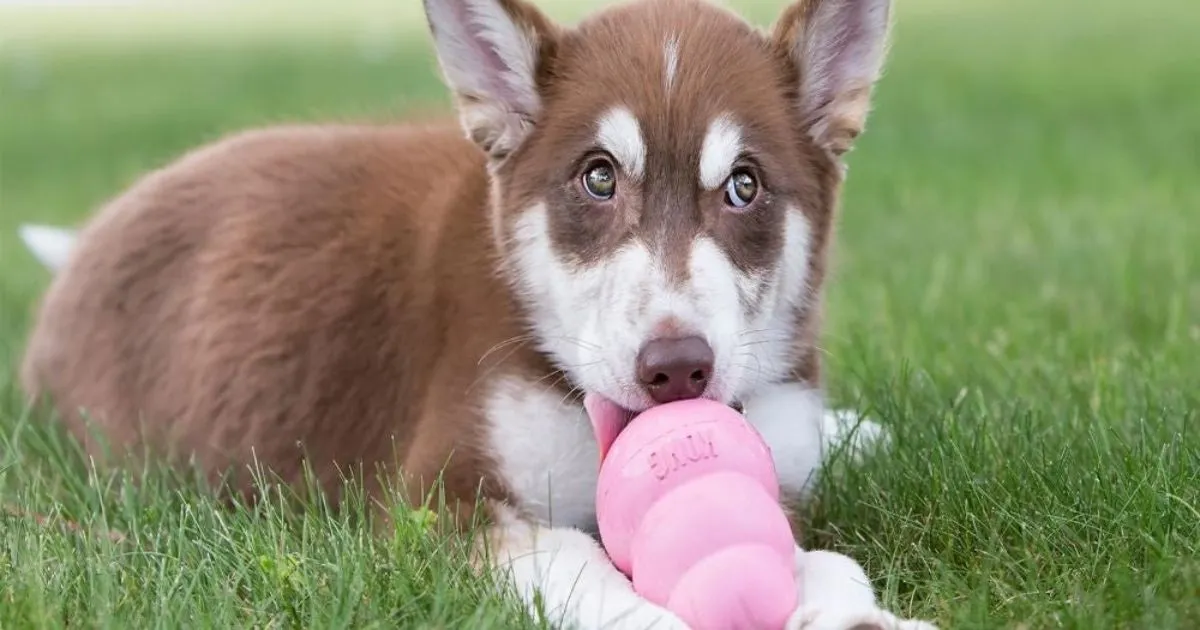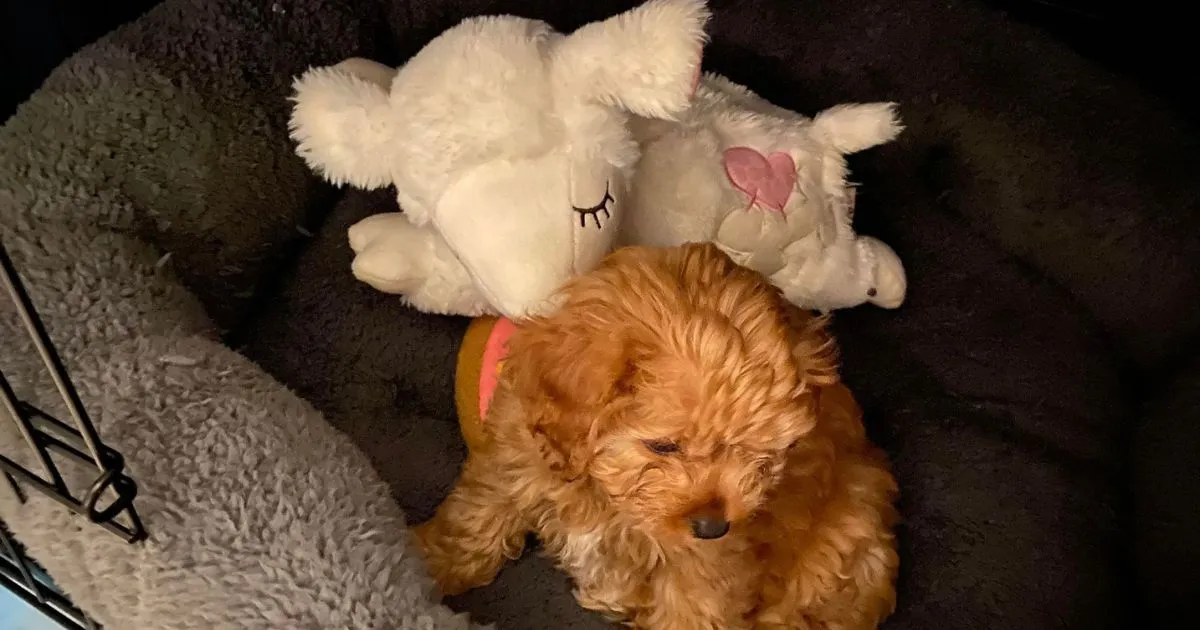Welcoming a 2-month-old puppy into your home is an incredibly joyful and pivotal time. This early stage is crucial for their growth, learning, and overall well-being. Providing the right toys is not just about entertainment; it’s a vital part of their development, addressing everything from teething discomfort to fostering cognitive skills and strengthening your bond. Understanding their specific needs at this tender age ensures you choose toys that are safe, stimulating, and perfectly suited for their journey into adulthood. From durable chew toys to interactive puzzles and comforting plush companions, selecting the ideal playthings will make a significant difference in how your little one adapts and thrives. If you’re looking for quality playthings for your new companion, exploring a variety of toys for 2 month old puppy is an excellent starting point.
Understanding the Unique Needs of a 2-Month-Old Puppy
A 2-month-old puppy is in a critical developmental phase, requiring toys that cater specifically to their evolving needs. This period is marked by rapid physical and mental growth, making thoughtful toy selection paramount for their health and happiness.
Teething Phase
At two months old, puppies are actively preparing to lose their baby teeth. This natural process can cause significant discomfort and soreness in their mouths, leading to an increased desire to chew on almost anything they can find. Teething toys are designed to alleviate this discomfort, providing a safe and appropriate outlet for their chewing instincts while promoting healthy jaw development. Giving them suitable options during this time can prevent destructive chewing habits on household items.
Fostering Cognitive Development
To support healthy cognitive development, mentally stimulating toys are essential for 2-month-old puppies. Look for interactive games that challenge puppies both mentally and physically, such as puzzle toys that reward problem-solving skills with treats. These types of toys encourage puppies to think, strategize, and learn, contributing significantly to their intelligence and adaptability. Engaging their minds with such toys can prevent boredom and foster a well-rounded temperament.
Enhancing Social Skills and Bonding
Playtime with your puppy is more than just fun; it’s a powerful opportunity to build a strong, trusting bond. The right toys can transform these interactions into enjoyable and memorable experiences for both of you. Toys that facilitate gentle tug-of-war or fetch encourage interaction and help your puppy understand boundaries and social cues, strengthening the connection you share.
Ian’s Insight: Prioritizing Growth and Fun
For your energetic 2-month-old pup, choose toys that encourage growth and fun. Prioritize chew toys for teething relief, tug-of-war toys for bonding, and puzzle toys for mental stimulation. Always supervise playtime to ensure safety and fun.
Essential Safety Considerations When Selecting Puppy Toys
When choosing toys for your 2-month-old puppy, safety must be the primary concern. Puppies are curious and can inadvertently turn playtime into a hazardous situation if toys are not chosen carefully. For breed-specific advice, consider what works for active breeds, like finding the best chew toys for a lab puppy that are designed to withstand their strong jaws. Similarly, smaller breeds might benefit from toys that are appropriately sized and durable for their mouth, so looking into options like the best chew toys for chihuahua puppies could be helpful.
Appropriate Size is Crucial
Picking an appropriately sized toy is crucial for your young puppy. Small pieces can easily become lodged in a pup’s throat, quickly turning a fun activity into an emergency. A general rule of thumb is to select toys that are larger than their mouth opening, preventing accidental swallowing, but still light enough for them to carry and manipulate comfortably. Always err on the side of caution with size.
Safe Materials Matter
Avoid toys made from soft rubber or brittle plastic that can break apart easily, posing dangerous choking hazards. Instead, opt for sturdy, hard rubber materials that are both safe and durable, even when subjected to vigorous chewing. Non-toxic, food-grade materials are always the best choice for puppy toys, ensuring that no harmful chemicals are ingested during play.
Beware of Hidden Dangers
Even toys marketed specifically for dogs can have hidden dangers. Some soft toys, for instance, may contain small internal components like buttons or squeakers that could dislodge and cause harm if swallowed. Always inspect new toys thoroughly before giving them to your puppy. Regularly check all toys for signs of wear and tear, such as loose parts, tears, or frayed edges, and discard any that become damaged.
Best Chew Toys for Your 2-Month-Old Puppy
At 2 months old, your puppy is actively navigating the teething phase, and specially selected chew toys are invaluable. Chewing not only provides relief from sore gums but also helps strengthen their tiny jaws and promotes appropriate chewing behavior.
Cactus Chill Teething Toys – All For Paws Pups
This robust freezer toy is an excellent choice for puppies with sore gums. Simply pop it in the freezer, and the cooling sensation will help ease pain as they chew. It’s also a fantastic option for keeping puppies cool and comfortable during warmer days, offering a refreshing and soothing chewing experience.
 All For Paws Pups Cactus Chill Teething Toy helps soothe sore gums
All For Paws Pups Cactus Chill Teething Toy helps soothe sore gums
Sweater Rope – All For Paws Pups
This adorable toy is perfect for puppies who love to chew. Crafted from a combination of jersey and rope woven together, it’s soft enough to be gentle on delicate puppy teeth while still providing a satisfying texture for chewing. Its small size makes it easy for young puppies to carry, and it’s ideal for engaging in gentle games of tug-of-war, fostering interaction and bonding.
Best Interactive Toys for Cognitive Development
Keeping puppies engaged is crucial not only for fun but also for their cognitive development. Puzzle toys and interactive games are excellent for stimulating your puppy’s mind, offering an enjoyable playtime that sharpens their problem-solving skills and encourages mental agility. This section details some of the best interactive toys to keep your 2-month-old puppy entertained and learning. For a broader overview of toys for this age range, you might find more options by searching for the best toys for 8 week old puppy.
KONG Puppy
Based on the highly popular KONG Classic, the KONG Puppy is an interactive treat puzzle toy specifically designed for young dogs. You can stuff treats inside, encouraging your puppy to figure out how to get them out, providing hours of engaging mental stimulation. It is crafted from soft KONG rubber, customized to be gentle on developing puppy teeth. Its unique, unpredictable bounce also makes it an excellent choice for games of fetch, adding a physical element to their playtime.
 KONG Puppy toy provides mental stimulation and is gentle on puppy teeth
KONG Puppy toy provides mental stimulation and is gentle on puppy teeth
Puppy Teething Stick – KONG
The KONG Puppy Teething Stick serves a dual purpose as both a chew toy and a fetch toy, specifically designed for young puppies. Its narrow shape is perfectly sized for puppies to carry comfortably in their mouths. This versatile toy also functions as a puzzle, featuring grooves that can be filled with wet treats, providing an extra layer of engagement and mental challenge for your growing pup.
Best Soft Toys for Comfort and Companionship
Every puppy needs a comforting cuddle buddy. A soft plush toy can quickly become your little mate’s best friend, offering a sense of security, easing anxiety, and providing warmth. These toys are especially beneficial during times of transition or when your puppy is learning to sleep alone.
Heart Beat Sheep – All For Paws
The Heart Beat Sheep is a popular plush puppy toy specifically designed to alleviate separation anxiety. It features a battery-operated heart inside that emits a gentle, rhythmic beat that can both be heard and felt. As your puppy snuggles against this heartbeat toy, the sensation mimics the presence of another dog, effectively reducing feelings of loneliness and minimizing nighttime barking, helping them feel more secure.
 All For Paws Heart Beat Sheep to comfort puppies with separation anxiety
All For Paws Heart Beat Sheep to comfort puppies with separation anxiety
Warm Bear – All For Paws
This beautiful plush bear features a microwavable pouch inside that provides comforting warmth. This feature not only helps alleviate separation anxiety in puppies but also keeps them warm and cozy on cold winter nights. The bear’s fur is exceptionally soft, making it perfect for snuggles and providing a soothing presence for your young companion, aiding in relaxation and sleep.
 All For Paws Warm Bear with a microwavable pouch for comfort and warmth
All For Paws Warm Bear with a microwavable pouch for comfort and warmth
Caring for Your Puppy’s Toys: Maintenance and Safety
Regular maintenance is key to ensuring your puppy’s playthings last longer and remain safe and hygienic. Proper care prevents the buildup of germs and helps you identify potential hazards before they become a problem.
Cleaning Hard Chew Toys
Puppy chew toys are designed to withstand significant gnawing from those tiny teeth. However, every nibble leaves behind saliva and food particles, which over time can become a breeding ground for germs. To address this, simply give chew toys a good scrub under warm water using a mild, pet-safe soap. Always make sure to rinse them thoroughly to remove all soap residue before returning them to your furry friend.
Maintaining Soft Plushies
Soft plushies are cuddly companions, but their fur can absorb all sorts of things, making regular cleaning essential. Most soft toys can be hand-washed in cold water. Some may also be suitable for a gentle cycle in the washing machine, but always check the care labels first. If your soft toy contains a heartbeat device, heat pack, or batteries, these components must be removed before washing to prevent damage. Lay them flat to air dry after washing, and avoid direct sunlight, which can fade colors and damage materials.
Routine Safety Checks
Routinely inspect all of your puppy’s toys for any signs of wear and tear. Be on the lookout for loose parts, frayed edges, or tears that could become a choking hazard. If you find anything suspicious or damaged, either repair or replace the toy immediately. It’s always better to be safe than sorry when it comes to your puppy’s health and safety. As your puppy grows and develops stronger jaws, you might eventually need to consider more robust options, such as indestructible dog toys for golden retrievers to withstand their adult chewing power.
Ian’s Transition Tip
As your puppy grows, transition to adult toys gradually, typically around six months old. Larger breeds may switch sooner, while toy breeds can stick with puppy toys a bit longer. Introduce new toys slowly, offering fun yet durable options.
Conclusion
Understanding your 2-month-old puppy’s developmental needs and selecting the right toys are vital for their healthy growth and well-being. Teething toys provide much-needed relief, interactive toys stimulate their minds, and soft plush companions offer comfort and security. Equally important is the commitment to proper toy maintenance for safety and hygiene, along with a gradual transition to adult toys as they mature. The right toys support their physical health, cognitive development, and emotional security during this critical early stage. For a comprehensive selection tailored to these needs, explore the diverse range of puppy toys available. Investing in quality toys now will foster a happy, well-adjusted, and playful companion for years to come.
